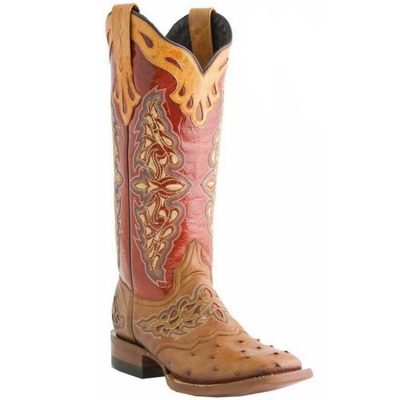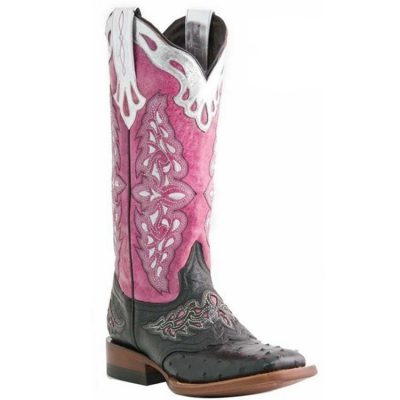For a long time, waterproof shoes have been a basic requirement for certain types of shoes (such as hiking shoes and golf shoes) and certain occupations (such as firefighters and farm workers). However, consumers now expect daily footwear products to also have a certain degree of water resistance, and this demand has a growing trend. Due to the limited range of materials and structure used in modern footwear products, this may cause extremely complex problems, but in most cases, it can provide effective and durable feasible solutions.
Waterproof and testing
The term Waterproofness tends not to be used in the footwear industry because it implies that water is completely drained out of the shoe. To achieve this goal, it will be extremely easy to cause product descriptions to conflict with consumer protection laws and regulations. In fact, the safer term used in most English-speaking countries is water resistance.
SATRA recommends that when guaranteeing the performance of shoes, whether there is a time limit or not, a comprehensive test plan must be adopted as the backing of shoe manufacturing. It is clearly recommended that there is a time limit, because when the material and structure age, the water resistance properties will inevitably disappear. In addition to footwear production testing, at least one pair of shoes in every 10,000 pairs of shoes should be independently tested, and more evaluations should be conducted on-site to ensure consistent performance.
Combination materials and whole shoe testing are more effective methods to measure the water resistance of shoes. The Maeser test method can better evaluate the water penetration resistance of shoe upper materials under dynamic conditions. This is relatively strict, but it can more accurately replicate the flexural strain encountered during wear. The Bally penetrometer is also used on the upper leather, but the flexing movement is softer. The whole shoe test is extremely important for evaluating the gap of the finished product and the water resistance of the overall structure.
Common methods of water resistant treatment
Water resistance is one of the main added characteristics integrated in footwear products. Using traditional shoe material leather, this effect can be achieved by applying grease and fatty substances to the upper, sole and crevices of the shoe. Various formulas based on this method are still used today, but unfortunately, although the water resistance is effective in the initial stage of wearing, the life is short, because mopping, abrasion and flexing will quickly damage the waterproof layer. To restore its water resistance, the treatment must be repeated.
Another traditional method for achieving waterproofing is to use continuous injection molded shoes or boots with materials such as rubber, polyurethane or PVC. This structure has good performance, but at the expense of comfort, because foot moisture cannot be discharged. Design possibilities are also subject to certain restrictions, although newer injection molding techniques and materials are broadening their possibilities. For example, multi-color and multi-density injection molding can be performed, especially for industrial and safety shoes, a steel toe cap can be integrated, and a lining can be added to the boot shaft to help maintain its shape. Wellington boots proved that continuous molded footwear plays an important role in “guaranteeing waterproofness”, which is no longer a problem.
When waterproofing is extremely important, functional shoes are ideal. Moisture-absorbing linings (including leather) and suitable hoses play an important role in comfort. For example, using the hot air circulation inside the boots for effective drying between work shifts is another way to extend foot comfort.
To achieve water resistance, shoes must meet two main requirements: the use of specially treated materials and the use of a properly designed water-resistant structure. This method can be used for most types of shoes, including casual styles that are lightweight and have no special structure. However, to achieve water resistance, comprehensive measures must be taken to effectively remove foot moisture. An early attempt to achieve water resistance in traditional footwear was to integrate impermeable PVC booties within the structure. When the PVC barrier layer remains intact, the performance is good, but the foot moisture cannot be effectively dissipated, and the advantages of the waterproof layer are therefore denied.
Water resistant new technology
According to SATRA’s method, the use of a water-resistant outer layer must be the first barrier layer to prevent water seepage. The leather can have a water-repellent coating or water-repellent treatment to make it waterproof or resistant to moisture. It is also possible to use water-resistant tanning methods that produce water resistance but do not have much impact on permeability. However, it must be remembered that as a natural material with flaws and variations, water may still penetrate into the side of the leather isolation area between the treated leather fibers.
As shown at the Asia Pacific Leather Fair in April this year, the leather industry continues to make significant progress in improving waterproofing systems. For example, the new products launched at the exhibition this year include Corilene WSB, a waterproof fatliquor from Stahl; and Lanxess’s easy-to-clean biodegradable degreaser, which does not contain nonylphenol and nonylphenol ethoxylate (in Especially important when producing waterproof leather); and the new wet end waterproofing procedures of Schill & Seilacher and Muenzing.
Bayer has also launched a waterproof system, claiming to provide “waterproof leather that can withstand extreme mechanical stress, with features and wearing comfort equivalent to high-quality standard leather.” The system is composed of special polyacrylate, which can reduce water absorption while maintaining full water permeability and tear resistance and tensile strength, plus a specially tailored silicone resin to provide extremely excellent water resistance to leather under dynamic conditions .
SATRA technical experts believe that: in addition to grain leather, other materials used as water-resistant uppers include coated leather (usually separated from the coarse flexible PU coating) and fabrics with permeable membranes. These fabric interlayers can be used as exterior materials or as linings for leather shoes.
Rubber or man-made polymer soles are generally resistant to water absorption and penetration, even under wet foot conditions. Leather soles also have certain permeability resistance, but long-term exposure will inevitably cause problems. It is also possible to provide a sole system with integrated permeable membrane to achieve waterproof performance while also dissipating moisture.
The emergence of water-resistant membrane materials that can penetrate moisture has indeed made an important contribution to the production of water-resistant shoes. Water-resistant membrane materials were originally designed for clothing, but were introduced into footwear in the 1980s. These water-resistant membranes come in many forms, but they are brittle and are usually supported by textiles. Most of the products offered use a “sandwich” type sandwich to protect the water-resistant film on both sides. The more common type of water-resistant film is microcellular plastic, which is in the form of tin foil laminated to textiles, or directly attached to the fabric as a coating. Although reticulated PTFE is also used in widely available systems, most are based on polyurethane.
Another type of water-resistant membrane is composed of a solid hydrophilic polymer in the form of a thin film or a direct coating. Although polyester has also been found to be useful as a film material, PU is still a relatively common film material, and these materials are generally thinner than the type of micro cell membrane.
Water-resistant membrane materials can be used to make waterproof bags or short boots. Just like the aforementioned PVC, it can be used to make water-resistant footwear around the shoes. The gaps in such structures should be as few as possible and far away from areas of high flexural stress. Because the inner bag is water-resistant, although traditional water-resistant leather is generally selected, any outer material can be used.
The eye of the needle provides a direct path for water to penetrate into the shoe, so a gap sealant or more common heat-activated tape must be used to effectively seal all the gaps between the exterior of the shoe and the inner lining. It is very common in traditional flat lasts where water-resistant leather is used as the exterior or the membrane material is used as the lining. In addition, to reduce the pinhole problem to a smaller size, other points to note are as follows: avoid passing through the gap between the upper and the lining; the surface gap is downward to avoid water collection; the corrugated tongue structure is used.
Water-resistant parts and structure
When manufacturing water-resistant shoes, the upper and sole must not only reach the beginning and the end of water resistance. More can also be involved, such as components. In fact, there are several insole products on the market that have been specially developed for water-resistant and waterproof applications. For example, Texon has produced insole materials, one suitable for flexible shoes and the other for more rigid styles, which feature a central polymer core that prevents water seepage. The non-woven material layers on both sides of the core can absorb and emit moisture to enhance foot comfort. Special stitches are also provided for making waterproof shoes.
Most of the above information describes the water resistance of traditional shoes, but there are also some examples of special waterproof structures. For example, Canada’s Asystec company’s patented structure claims to provide footwear, “not only can breathe, but also can exhaust moisture, improve comfort.” The Asystec structure was originally developed in 1977 and is characterized by a molded shell with an opening at the bottom, making it easier to sew onto the upper. After the upper has been glued to the shell, seal the upper to ensure waterproofing. Then connect the midsole and sole to complete the entire structure. A moisture-permeable layer is provided between the upper and the insulating layer to capture any moisture that penetrates the upper material and discharge it through the pinholes.



















